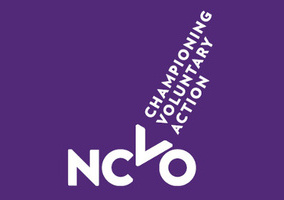Voluntary sector income from the government is at its lowest for 15 years, new research from NCVO reveals.
NCVO’s 2022 UK Civil Society Almanac shows that, for the first time in 20 years, most voluntary sector income comes from public giving, with 51% coming from this source.
Smaller charities (under £100,000 income) have declined in number, the report shows, making up 80% of the sector now compared to 88% two decades ago.
There has been an increase in the number of people over 50 and disabled people working in the UK voluntary sector over the past two years, the report says.
Meanwhile, the voluntary sector remains less ethnically diverse than the wider economy, with 90% of its staff identifying as white, compared to 86% for the public and the private.
Government funding declining
The government supplied £15.4bn, 26% of voluntary sector income, which marks the lowest proportion of sector income from the government since 2004/05.
There was a fall of £684m in the amount of government funding for the sector in the year to 2019/20, after a few years of relative stability.
The report suggests this appears to be caused by a decline in local government income, falling from £9.4bn in 2007/08 to £6.9bn in 2019/20, as well as changes to grant income and a fall in government contracts.
Larger organisations receive much more income from the government than smaller ones.
NCVO notes that government funding in the form of furlough payments, emergency Covid-19 support, and now energy bill relief, are yet to come through in the available data.

Nayyara Tabassum, research and insight manager at NCVO, said falling income from government and the impact of the cost-of-living crisis on household spending has the potential to place the sector in a precarious financial position.
“It underlines the need for further government support for those who are struggling with rising costs and targeted funding for charities who face increased demand and falling income while supporting our communities through this crisis,” she said.
The voluntary sector contributed about £20 bn to the UK’s economy, or 1% of Gross Domestic Product (GDP).
Meanwhile, its workforce grew 3% over the last year, the fastest growth of any sector over the last decade.
Small charity numbers decline
The 2022 Almanac shows there are 165,758 voluntary organisations in the UK, as of 2019/20, which is a very small increase from the year before. The vast majority of voluntary organisations are micro and small.
It also shows small organisations have declined in both number and proportion. In 2000/01 they made up 88% of the voluntary sector but this has fallen to 80% in 2019/20.
The impact of the pandemic on the number and size of organisations is yet to be seen in full, as new Almanac editions will start to cover the Covid-19 pandemic period.
In 2019, 5,846 organisations were removed from the Charity Commission register but this plummeted to 3,830 in 2020. This downward trend continued with just 3,596 removed in 2021.
However, registrations of new charities with the Charity Commission have also fallen sharply in the latest data.
Volunteering ‘substantial rise linked to the Covid-19 pandemic’
More than half of people volunteered informally at least once in 2020/21 and a third did so at least once a month.
This is a “substantial rise linked to the Covid-19 pandemic” reads the report. However, the number of people volunteering formally took a hit during the pandemic; 16.3 million people volunteered formally through a group, club or organisation in 2020/21, a fall from 20 million in the previous year.
The Almanac shows people aged 65-74 are the age group most likely to volunteer on a regular basis, twice as much as those aged 25-34.
Women are more likely than men to volunteer both at least once a month and once a year.
Disabled people are slightly more likely to volunteer regularly but slightly less likely to volunteer occasionally.
People from the most deprived socio-economic areas are half as likely to volunteer as those from the least socio-economically deprived places.
Related Articles












